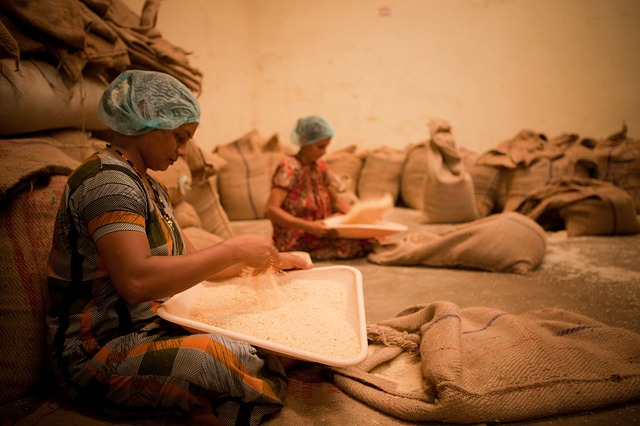Millions of women are dropping out of the workforce in India

India is experiencing a decline in its female labor participation rate and a shrinking of the total number of women in the workforce, researchers from the World Bank have discovered.
Nearly 20 million Indian women quit work between 2004/05 and 2011/12, while the labor force participation rate for women of working age declined from 42% in 1993/94 to 31% in 2011/12. In rural areas, the female labor force participation rate dropped from 49% to 37.8% between 2004/05 and 2009/10.
Why is this happening when India’s economy has been growing steadily?
Marriage, motherhood, gender bias, and patriarchy are some of the social norms attributed to women leaving the workforce in India. However, in villages the workforce participation rate of married women has actually been found to be higher than that of unmarried women—in the cities, the situation is reversed.
The researchers believe that one explanation for the drop in the participation rate among rural girls and women aged 15–24 is the recent expansion of secondary education and rapidly changing social norms leading to "more working age young females opting to continue their education rather than join the labour force early."
However, having a high school education is not found to be an incentive for women to work. The lowest rate of labor force participation was found to be among those who had secured school and high school education in the cities and villages—the rate was highest among illiterates and college graduates. But there has been a general drop in the rate in recent years, indicating that irrespective of educational attainments, "the incentive for women to participate in the workforce has declined over this period".
The ILO ranked India 121 out of 131 countries in 2013 for female participation in the workforce. China and Sri Lanka have also seen their rates drop, but India stands out because of a such a sharp decline within such a short period.
The World Bank study suggests that gains will not be realized unless social norms around women’s—and men’s—work also change: “Strategies to communicate the importance of women’s work should take into account the roles of women, husbands and in-laws.”
Sher Verick has covered this subject for IZA World of Labor, he writes: “Beyond standard labor force participation rates, policymakers should be concerned with whether women can access better jobs and take advantage of new labor market opportunities that arise as a country grows and, in so doing, can contribute to the development process itself. For this reason, policies should consider both supply- and demand-side dimensions, including access to better education and training programs and access to childcare, as well as other supportive institutions and legal measures to ease the burden of domestic duties, enhance women’s safety, and encourage private sector development in industries and regions that can increase job opportunities for women in developing countries.”